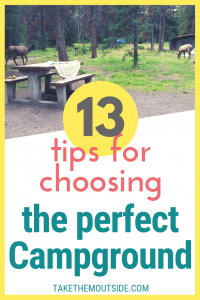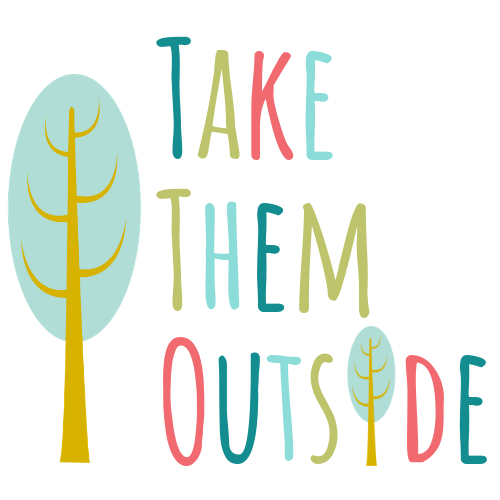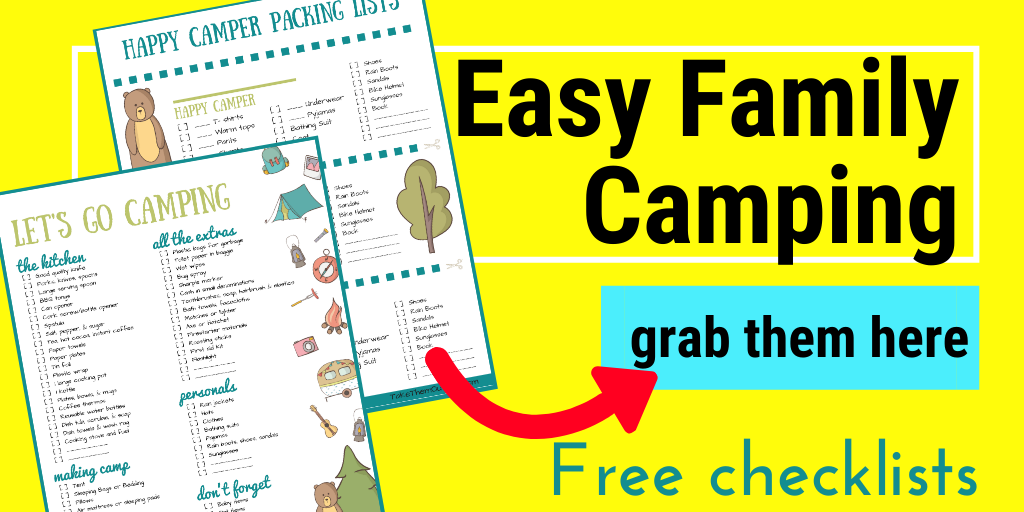So you want to go camping… but where will you camp? Finding and choosing a campground may not be easy. There are lots of things to take into consideration before you head out for the weekend. Read on below for 13 of the most important considerations to help you choose a campground perfect for your family.
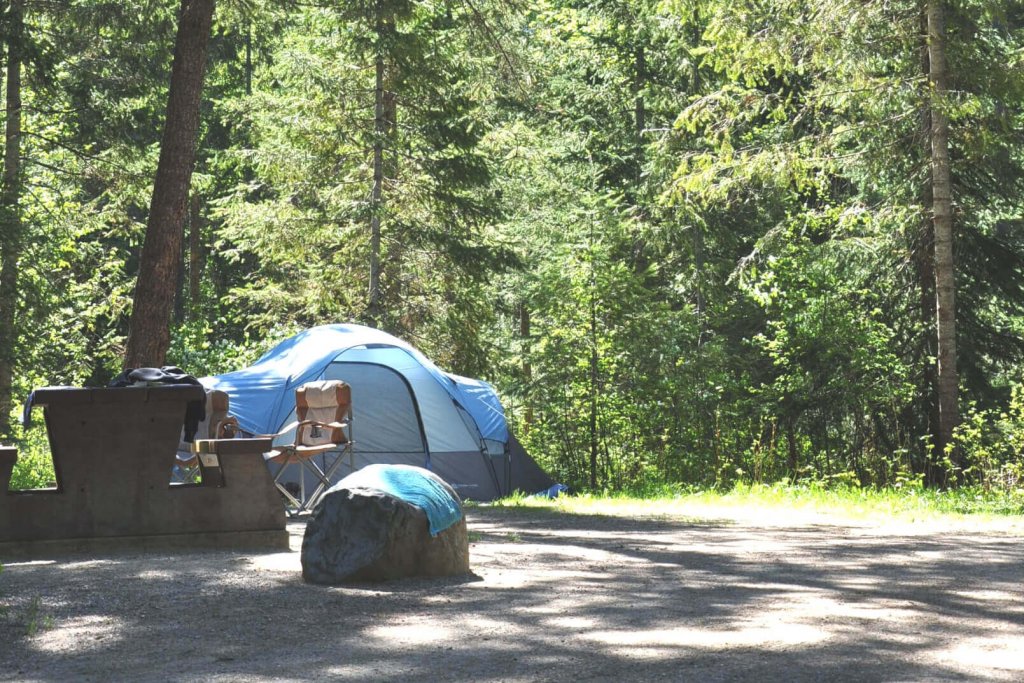
What should I look for in a campground?
Usually the first consideration on choosing a campground is its location and proximity to nearby attractions. But if that’s not a concern or there are lots of campgrounds in the area, then here are a few more items to think about:
1. The natural environment: Geography can really make a campground special! Some campgrounds are on lakes or tucked into the mountain side. Some are right in town while others might be a farmer’s field. What’s your preference when it comes to nature?
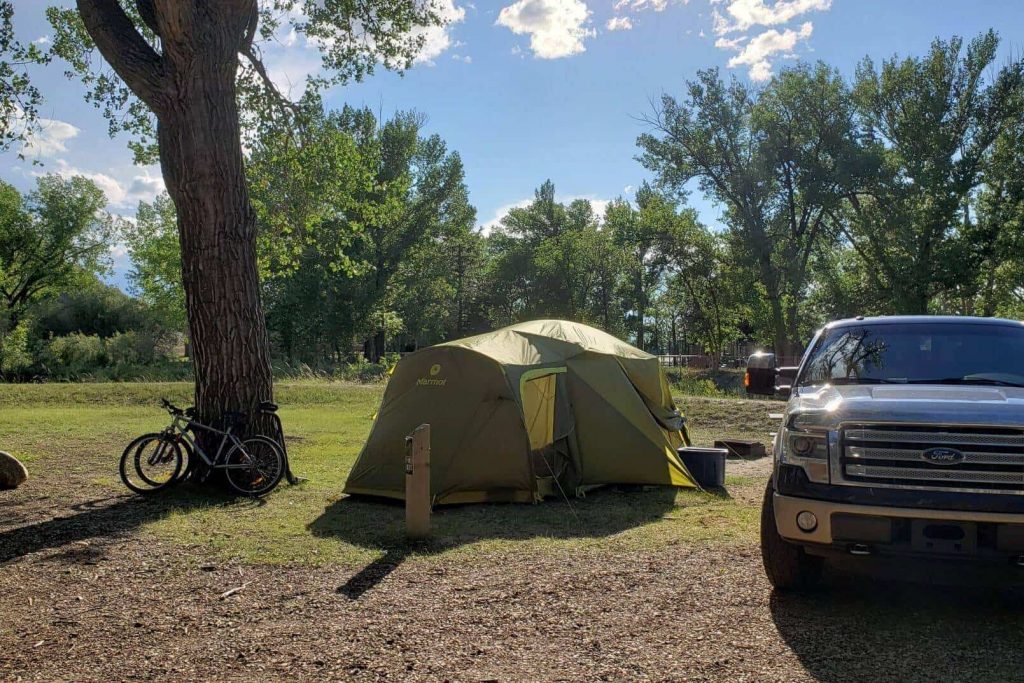
2. Services: Will you and your family need (or want) electricity, water, or sewer hookups?
3. Campfires: Some campgrounds are now putting in designated campfire free areas and some are taking out campfire pits all together. Will you be wanting a campfire? Where can you get firewood from? How much will firewood cost?
4. Services: Do you need hot running water and flush toilets, or are you fine with pumping water from a well, hauling it from the river, and using pit-toilets? Will you be needing shower facilities?
5. Amenities / Programming: Do you prefer small quiet campgrounds or ones with interpretive programming and organized activities? What about a pool or swimming beach? Would your family like to have playgrounds or hiking trails near by?
6. Cost: Usually sites with full-hookups (or services) will cost more than campsites without services and amenities. Some places may ask that you pay an extra fee to have a site with a campfire pit or require that you purchase the firewood on-site. Then, there are un-maintained campgrounds that you might not have to pay for at all.
Really, finding the perfect campground is such a personal choice. Some campers prefer total solitude out in the wilderness where other families are happiest camped shoulder to shoulder in a wide open meadow.
Looking for Campground Reviews
It’s always a good idea to do a quick search for on-line for reviews of whichever campground you are considering.
Once on a road trip my family picked a campground based on a lovely brochure we found. It highlighted a fun kid’s playground, a trail to the river, and beautifully manicured camping spots.
However, when we arrived it didn’t take long to realize the brochure had been slightly unrepresentative of this particular spot. Perhaps our first clue was that the campground was deserted… like there was no one there! But, we were willing to give it a try. We found a small, unkempt spot and headed over the the playground. My kids actually asked if the playground was safe… it was that sketchy! But the kicker was the abandoned shack that someone was evidently living in and what looked like a fresh grave that had been dug out back! Needless to say, we didn’t spend the night!
So, now, we like to check for a review or two before planning to spend the night somewhere!
A few fun ways to find campground reviews:
Sometimes a simple google search for “Campground X Review” will give you lots of information.
CampgroundReviews.com is a one site where campers can submit their own reviews about sites and it seemed to have a pretty decent number of reviews.
CampsitePhotos.com is another user generated review site where campers can submit their own campsite photos. If you’re planning a stay at a more popular american location, you might have luck on this site.
Another cool tip is to find the campground you’re considering on Google Maps, then jump to the satellite and street view – drop the little man onto the road and take a walk around! It might not be a recent photo, but it will give you a much better idea of campground size, trees, campsite sizes, layout, roads, and amenities. This is my favorite way to review a campground online.
How to find a good campsite spot
Knowing which campsite to reserve is so tricky! Sometimes all they give you is a map and say choose! How are you to know which site is best?
Here are a few considerations:
1. Playgrounds: If you don’t want your little kids running off to the playground or constantly asking to go to the playground, then don’t choose a campsite from which they can see all the fun all the other kids are having while they are not. Instead, choose a site near to the playground, but out of sight from the playground. However, if you trust your kids to go to the playground alone, then choosing a site right beside the playground might be perfect!
READ MORE: You might want to read more tips on playgrounds and camping with little ones in the ultimate guide to camping with toddlers here!
2. Bathrooms: Being next to the bathroom often means there will be people cutting through your campsite or continually passing by. But, it also means getting your littles to the bathroom is quicker and easier, especially in the middle of the night! However, bathroom buildings usually have a light that remains on all night long which can be bothersome if you’re sleeping close to that light. On the other hand, if you’re scared of the dark, maybe you’ll welcome the light!
3. Privacy: If you’re camping with young children a wide campsite with limited shrubbery and trees means you can keep a better eye on your little wanderer. However, if you prefer privacy and aren’t worried about kids wandering off, then you might want to find a site with a thick border of trees and such. You’ll also want to consider how close the campsites are to each other.
4. Water: Camping next to the lake or river can be a very picturesque spot. However, it is also a dangerous spot if you have small children. You might find it cooler or breezier by the water, which might or might not be welcomed…. depending on weather and bugs.
5. Fire: Many campgrounds now have campfire free areas. Or, by simply choosing a spot with a campfire pit (whether or not you intend to use it), you might be paying an increased fee.
6. Cooking shelters: If you are tenting and the weather is calling for rain you may want to think about a spot near a public cooking shelter. Here in our Canadian National Parks, campgrounds have cooking shelters with tables and often a wood stove too. It’s a nice spot to meet your neighbors and do your cooking in a dry and warmer location.
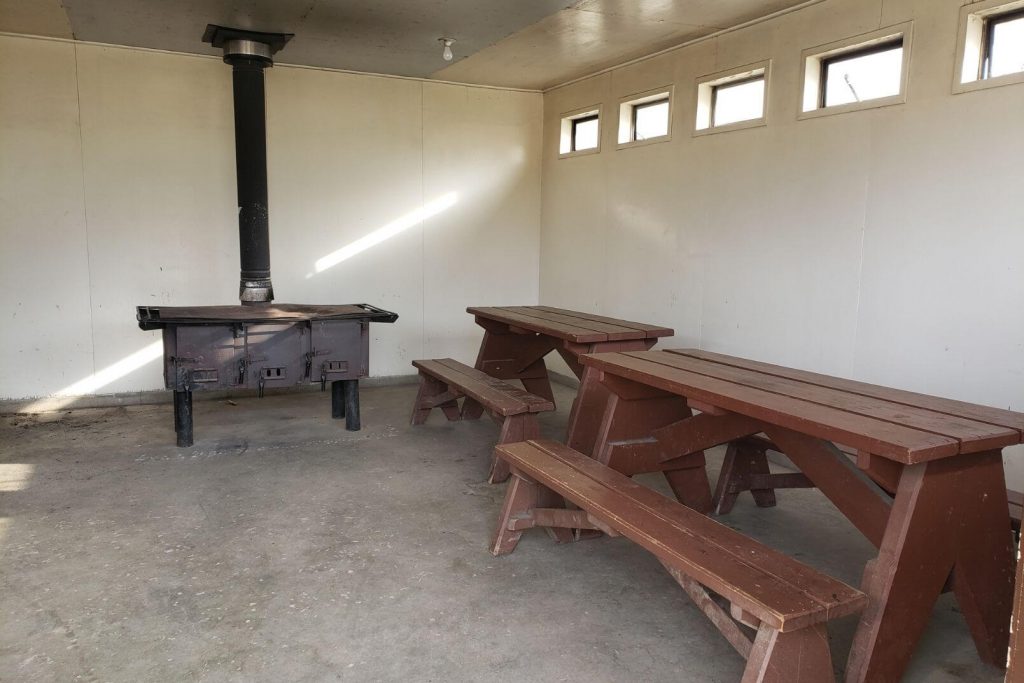
7. Campsite Size and set-up: When you’re sleeping in a tent, you are usually less concerned about size of the sites and parking area. However, if you have an RV or trailer, you’ll want to pay close attention to review mentions of campsite parking sizes and approaches.
The more level and wider the parking area, the easier time you’ll have parking and leveling your unit. Don’t forget to consider how close the tree branches are if you have awnings and slides to pull out. Another consideration is the placement of your unit’s door in relation to the site’s set up.
Oftentimes campsites will have designated tent pads which (if you’re lucky) have been portioned off. These bordered tent pads are usually softer and getting tent pegs into the ground should be easier. By using the designated tent pads you’ll have an increased chance of staying dryer in wet weather since they’re often put on higher ground with slope and drainage considered.
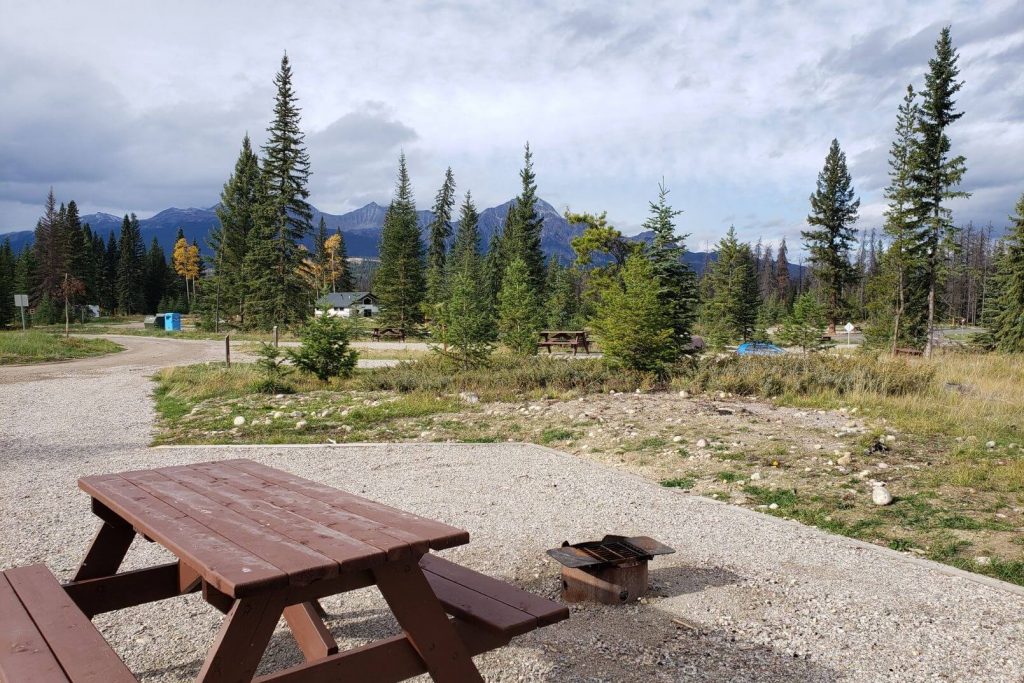
Where should you put your tent?
Like mentioned, many sites have partitioned tent pads, but if you do have the option to choose the placement of your tent you may want to consider the following:
1. The sun: Do you want to get the morning rays or do you want to be shaded from the heat?
2. The wind: Is there a strong wind you need shelter from or would you like to angle the windows to catch the breeze?
3. The water: If it rains where will the water go? You don’t want the water to go under your tent. Pitching your tent on the high ground is good advice.
4. The ground: Does the ground look hard, lumpy, uneven, sloped, full of rocks? Flat, cleared, softer ground is best.
5. The bugs: Take a good look for ant hills, wasps nests, or any other indication that there might be insects or creatures living where you plan to pitch your tent.
It can take time to choose a campground, but it really can make or break a camping trip. Make sure to take the time it need to assess your options and consider your campground and campsite with all the above criteria in mind. Believe me, the extra time you put into finding a great campground will pay off!
And, now that you’ve found the perfect campground, maybe you should consider planning and packing for your trip? And, if that’s the case, head over to read all about how to plan a simple family camping adventure and grab our camping packing lists!
